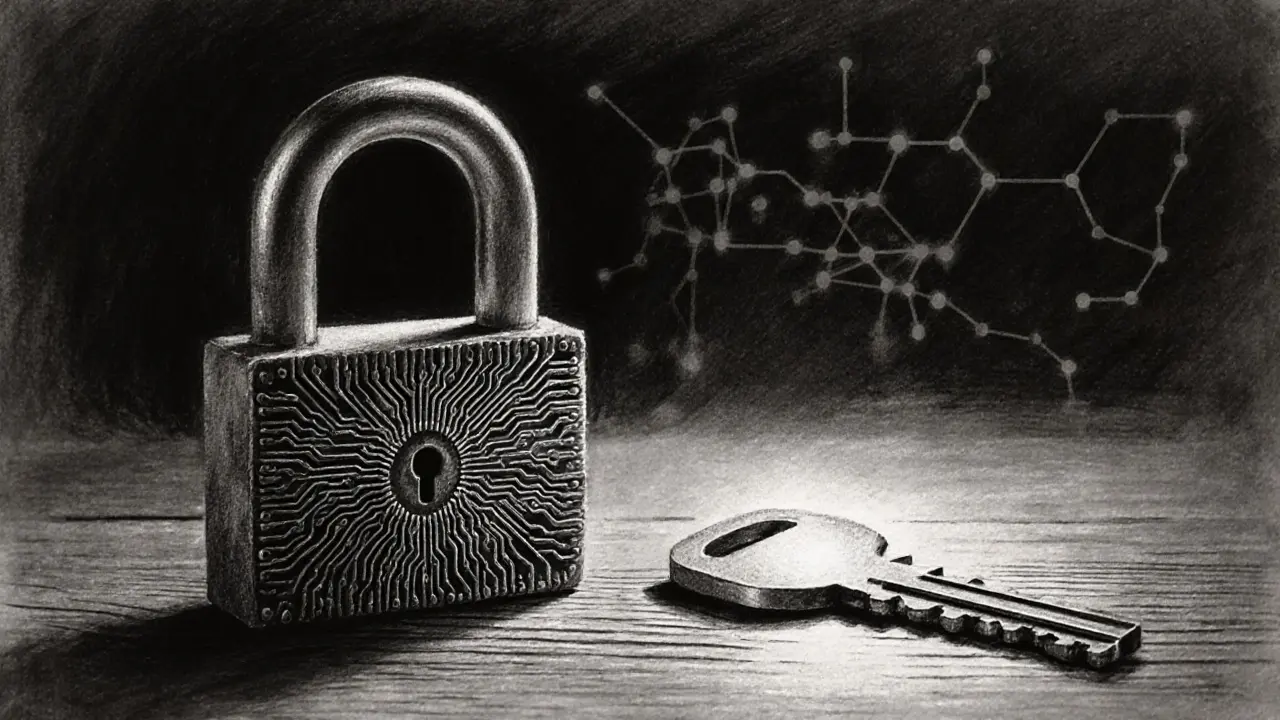Private Key Safety Simulator
How Keys Work Together
This simulator demonstrates the cryptographic relationship between public and private keys. Never enter real private keys here - only use this for educational purposes.
Security Warning: Your private key is your digital fortune. If someone gains access to it, they can steal all your cryptocurrency. Never share your private key or seed phrase with anyone.
A 256-bit private key (64 hex characters) is the foundation of your cryptocurrency security. This is mathematically linked to your public key.
The public key is generated from your private key using a one-way mathematical function. This allows others to send you funds while keeping your private key secret.
Wallet Address Generation
The wallet address you share with others is a simplified version of your public key. It's created by applying cryptographic hashes and encoding.
Ever wondered why you can send Bitcoin to anyone without a bank? The secret lies in a pair of cryptographic codes - the public key and the private key. These two strings work together like a lock and its unique key, letting you receive funds safely while keeping full control over them.
What is a Public Key?
Public Key is a cryptographic identifier that can be shared openly to receive cryptocurrency and verify digital signatures. Think of it as your email address on the blockchain: anyone can send you money using this address, but they can’t see the secret behind it. The public key is derived from the private key through a one‑way mathematical function, so reversing the process is practically impossible.
What is a Private Key?
Private Key is a secret, randomly generated string that grants ownership and the ability to sign transactions. If the public key is your email address, the private key is the password that lets you log in and move funds. Losing this password means losing access to the money forever - there’s no “reset” button on the blockchain.
How the Key Pair Is Created
Creating a key pair starts with the private key. Secure wallet software uses a cryptographically strong random number generator to produce a 256‑bit number, usually displayed as a 64‑character hexadecimal string. From that number, a mathematical algorithm (most commonly the Elliptic Curve Digital Signature Algorithm, secp256k1) calculates the matching public key. Because the function is one‑way, anyone can confirm that a public key belongs to a private key, but they can’t derive the private key from it.

From Public Key to Wallet Address
Wallet Address is a shortened, user‑friendly representation of a public key used in transactions. The blockchain stores the public key, but for everyday use wallets hash the public key (using SHA‑256 then RIPEMD‑160) and encode the result in Base58Check. The result is the familiar alphanumeric address you copy‑paste when sending or receiving crypto.
Digital Signatures: Proving Ownership
When you want to move funds, your wallet creates a Digital Signature that encrypts the transaction data with your private key. Nodes on the network then use the accompanying public key to verify that the signature is valid. This process proves that the sender owns the funds without ever exposing the private key.
Managing Keys: Wallets, Seed Phrases, and Hardware
Most users never see raw keys. Instead, they interact with a Cryptocurrency Wallet that abstracts the complex math. Wallets generate the key pair and store the private key securely. For backup, many wallets create a Seed Phrase - a 12‑ to 24‑word mnemonic that encodes the master private key. If you lose the wallet app but still have the seed phrase, you can recover every address and balance.
Hardware wallets such as Ledger and Trezor keep the private key on a physical device that never touches an internet‑connected computer. This isolation dramatically reduces the risk of phishing or malware stealing your key.

Security Risks and Best Practices
- Never share your private key or seed phrase. Anyone with that information can drain your assets.
- Back up your seed phrase in multiple offline locations (paper, metal‑plate).
- Use hardware wallets for large holdings; keep only small amounts in hot (software) wallets for daily use.
- Enable multi‑signature wallets where two or more private keys must sign a transaction, adding an extra layer of protection.
- Stay aware of phishing sites that ask for your private key - legitimate services never request it.
Public vs. Private Key: Quick Comparison
| Attribute | Public Key | Private Key |
|---|---|---|
| Visibility | Publicly shareable; appears on blockchain | Secret; must be stored offline |
| Primary Role | Receive funds, verify signatures | Sign transactions, prove ownership |
| Derivation | Derived from private key (one‑way) | Generated first; random 256‑bit number |
| Loss Impact | Can be regenerated from private key | Permanent loss of access to funds |
| Security Threat | Minimal - attackers can only send you funds | Critical - full control over associated assets |
Future Trends: Quantum Threats and Usability Improvements
Researchers are watching quantum computing as a potential future risk. Quantum algorithms could theoretically solve the elliptic‑curve math that protects private keys. The crypto community is already exploring post‑quantum signatures (e.g., lattice‑based schemes) to stay ahead.
On the usability side, wallet developers aim to simplify seed‑phrase handling, integrate biometric unlocks on hardware devices, and provide clearer UI cues about key safety. Multi‑signature and social‑recovery solutions also give users a way to protect large balances without a single point of failure.
Frequently Asked Questions
Can I change my public key after I’ve received funds?
Yes. Since the public key is derived from the private key, you can generate new address‑public key pairs inside the same wallet. Existing funds stay where they were unless you move them.
What happens if I lose my private key but still have the public address?
You can still receive new payments, but you’ll never be able to spend the existing balance. The blockchain treats the address as a one‑way lock without a key.
Is a seed phrase the same as a private key?
A seed phrase is a human‑readable encoding of a master private key. From that master key, a wallet can derive dozens or thousands of individual private keys.
Do hardware wallets store the public key as well?
Yes. The device keeps both keys internally. It exposes the public key (or address) to the computer for receiving funds, while the private key never leaves the secure element.
How does multi‑signature improve security?
Multi‑signature wallets require two or more private keys to approve a transaction. Even if one key is compromised, an attacker still can’t move funds without the additional keys.


Oh great, another deep dive into public and private keys-because we all needed more crypto bedtime reading!!! 😂💥
One must commend the author for attempting to distill the labyrinthine intricacies of asymmetric cryptography into a format accessible to the layman, yet one cannot help but observe a certain theatrical flair bordering on melodrama, an affectation most unbecoming of serious technical discourse.
Honestly, if you still think you can just copy‑paste a private key into any site without a hardware wallet, you’re living in the Dark Ages of security. Get a proper setup before you embarrass yourself.
Hey Mitch, love the humor! 😄 Just a heads‑up-those keys are for demo only, don’t accidentally drop your real seed phrase on a forum.
The existence of a private key is akin to the concept of the self; it is unseen yet empowers all actions in the cryptographic realm, reminding us that security is ultimately a matter of trust in the unseen.
Thanks for the thorough intro! 🌟 It's cool to see how public keys let us share wealth safely. Keep the good vibes coming! 😊
It is imperative, nay, obligatory, that users comprehend the irreversible nature of private key loss; any lapse in diligence constitutes a moral failing against one’s own financial sovereignty.
While the math behind key generation is sound, it’s essential to remember that human error-like weak passwords-remains the biggest attack vector.
Public keys are just fancy QR codes for the internet, right?
Keys? Just numbers, nothing to worry about.
Got it, keep my seed safe.
🔐 Pro tip: write your seed phrase on metal if you’re storing large amounts; paper degrades over time.
America leads in blockchain innovation; therefore every US citizen should master private key security to protect our digital assets.
The discourse surrounding cryptographic key management demands rigor and an avoidance of colloquial simplifications.
Contemplating the immutability of a blockchain transaction reveals the profound responsibility embedded within a single private key.
Understanding the dance between public and private keys is the cornerstone of any respectable cryptocurrency education.
A private key is essentially a 256‑bit random number, and its secrecy is what safeguards your digital wealth.
If that number ever leaks, all the coins tied to the corresponding public key are instantly vulnerable.
Conversely, the public key, derived through elliptic‑curve multiplication, can be shared openly without jeopardizing security.
The one‑way nature of this mathematical operation ensures that reversing from a public key to its private counterpart is computationally infeasible.
When you broadcast a transaction, your wallet signs the data with the private key, producing a digital signature.
Network nodes then verify that signature using the public key, confirming that you are indeed the rightful owner.
This process eliminates the need for any central authority, embodying the trustless ethos of blockchain.
However, the elegance of the system is undermined by human mistakes, such as storing the private key on an insecure device.
Hardware wallets mitigate this risk by keeping the private key isolated from internet‑connected hardware.
Furthermore, employing a seed phrase-a mnemonic representation of the master private key-allows for secure backups.
Just remember to store that seed phrase offline, preferably on metal, and never digitize it.
Multi‑signature wallets add another layer of defense by requiring several independent keys to approve a transaction.
Should one key be compromised, the assets remain safe behind the remaining signatures.
Looking ahead, the potential advent of quantum computers threatens the elliptic‑curve assumptions underlying current keys.
Researchers are already developing post‑quantum signatures to stay ahead of that eventuality.
Honestly, most people will never understand this stuff, so just stick to buying Bitcoin.
Don’t let the complexity intimidate you-start with a small amount, practice securing your seed, and you’ll build confidence fast.
Remember, you’re not alone in this learning curve; many communities are happy to help you set up a safe wallet.
It's worth noting that the address generation process compresses the public key through SHA‑256 and RIPEMD‑160, then encodes it in Base58Check, which reduces the likelihood of transcription errors.
While the cryptographic primitives are rock‑solid, the user‑interface design of many wallets still leaves room for catastrophic user errors-don’t be fooled by shiny graphics.
Indeed, the looming quantum threat underscores the urgency of advancing post‑quantum cryptography.
Cool post, learned something new about keys.